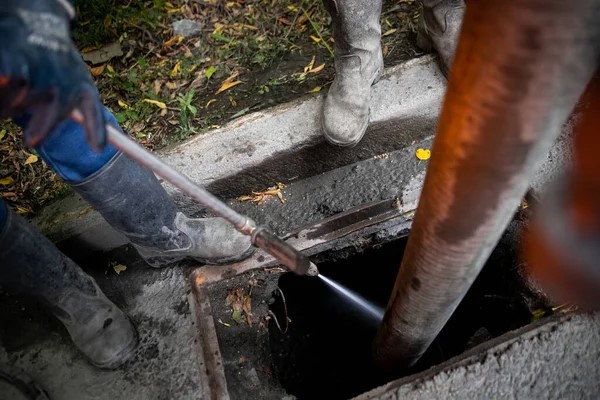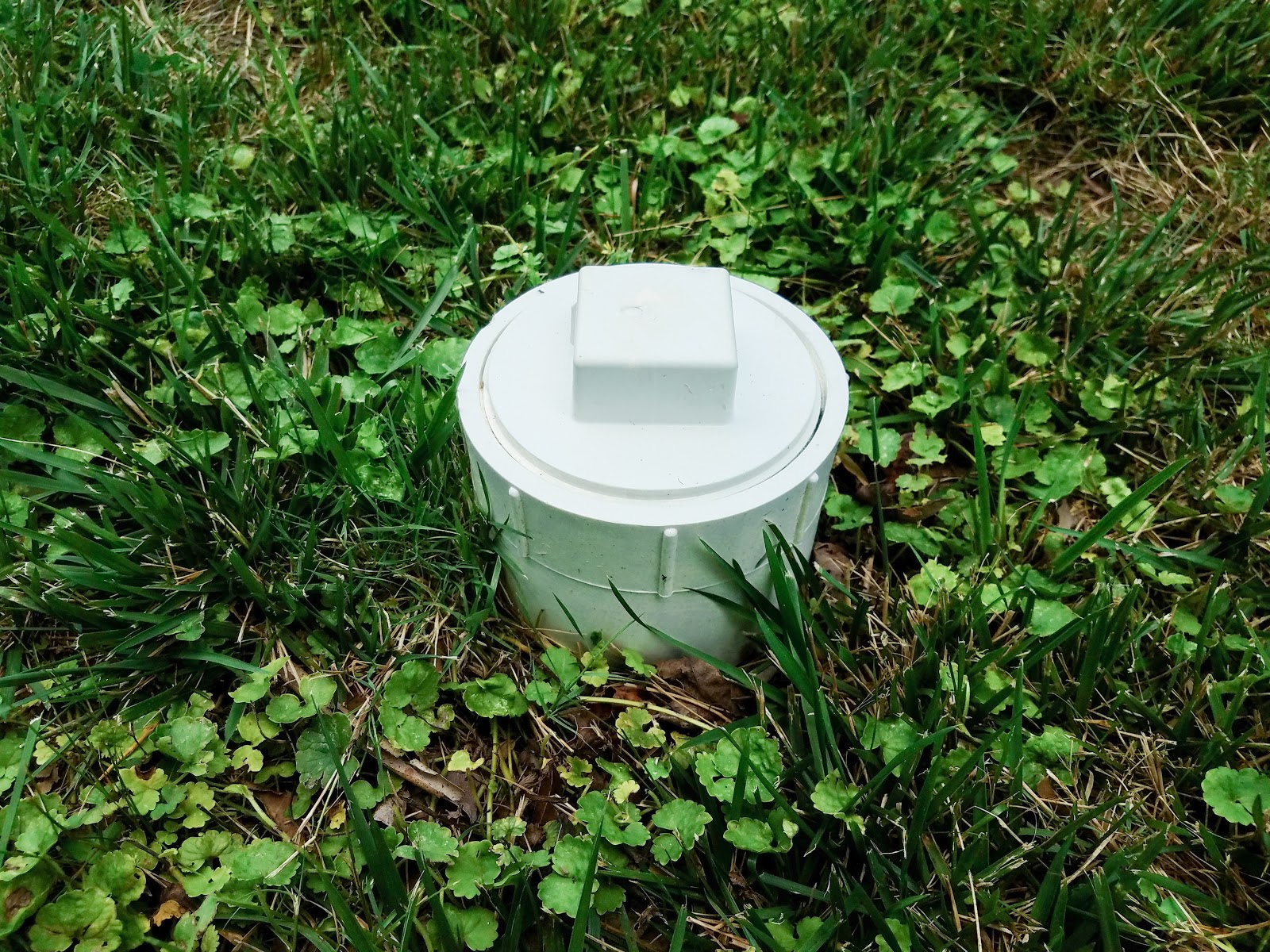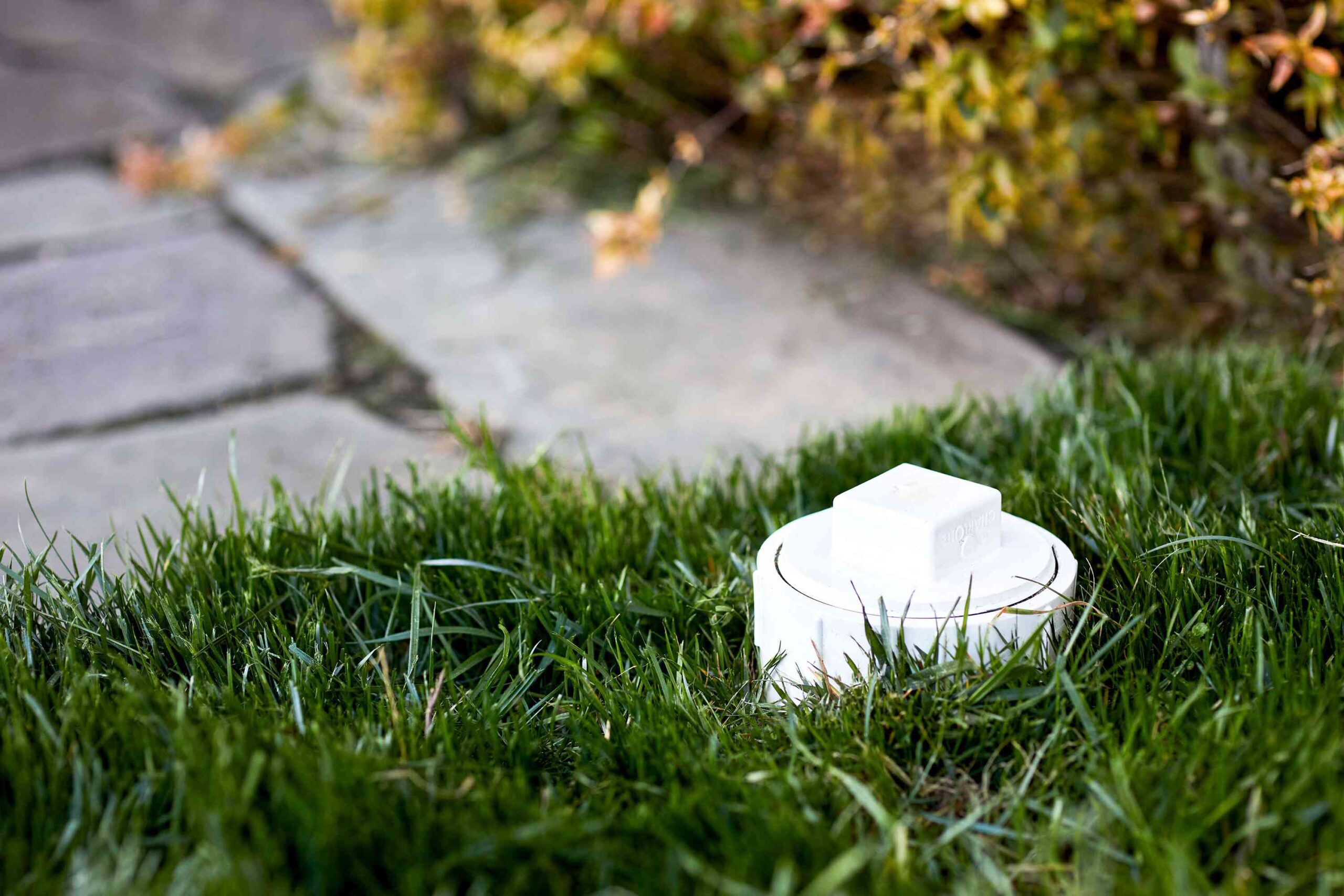Drain Clean Out Servicesin Troy MI
Professional Drain Clean Outs for Clear and Flowing Drains
We Are Locally Owned & Operated For Over 37 Years
Contact Us Today!
We Serve Businesses In And Around The Following Cities:
About Drain Clean Out Services
Introduction
While the city of Troy may be known for its ancient history and cultural vibrancy, it is also renowned for its commercial properties. And among the most critical aspects of the upkeep of these properties is the often unseen but highly crucial task of drain cleanouts. The primary keyword here is ‘Drain Clean Outs’, an essential maintenance process that prevents commercial property premises from facing severe drainage issues. Prioritizing this vital service sidesteps detrimental disruptions in the long run.
Understanding Drain Clean Outs
Drain cleanouts are points of access that allow the safe, efficient removal of blockages from the building’s drain system. They are usually located on a property’s exterior landscape and are designed for easy accessibility. A regular drain cleanout service goes beyond the typical baseline of property maintenance and involves professionals, like the experienced team at D&J Contracting, inspecting and ensuring that your establishment’s drain system is functioning optimally.
The Process of Drain Clean Out
When it comes to the process, a well-planned protocol usually starts with locating the cleanout plug and involves yard drainage contractors near you for the job. Often found on a standard drainage line, it could lead to a basement perimeter drain or another exterior outlet. The contractor will remove the plug and insert a plumber’s snake or similar device to eliminate the blockage. Many properties require trench drain installation near you, or an outdoor drain installation, depending on their layout and drainage needs. D&J Contracting is accustomed to managing such requirements, and their experience provides a systematic and stress-free resolution to drainage problems.
The Benefits of Regular Drain Clean Outs for Commercial Properties
Regular drain cleanouts come with plenty of benefits. Firstly, it aids in preventing collapsed pipe repairs, a common and often expensive issue many properties deal with. Implementing drain cleanouts drastically reduces the odds of such occurrences, saving businesses both the related expenses and downtime. It also safeguards the property from foundational issues related to rainwater drainage, especially when a trench for yard drainage is in place. Rainwater, if not properly managed, can accumulate, leading to foundational problems. The D&J Contracting team specializes in exterior drainage solutions, ensuring that accumulated water from rain is properly managed and directed away from the property.
Applying Drain Clean Outs in The Real World
The application of drain cleanouts in the real world is widespread. From hotel chains utilizing yard drainage services near them, to factory premises incorporating outdoor drainage companies to maintain a smooth operational flow. Shopping centers, too, have deployed drain clean out services on a regular basis to keep their facilities’ functioning at optimum levels. And professional service providers like D&J Contracting are at the heart of these essential services.
Consider a downspout drainage contractor’s role in coping with a frozen discharge line during Troy’s frigid winters. These incidents can cause significant disruptions, but with proactive preparations and maintenance, issues are significantly minimized.>p>
Then there is the rainwater drainage ditch, a system that could potentially become a breeding ground for mosquitos and other pests. However, drain cleanouts ensure that these open drains remain unclogged and water flows without stagnation, thus eliminating these potential problems. When it comes to hydro jetting drain lines at larger complexes or rain water manholes management in a public space, dependable service providers like D&J Contracting are pivotal to maintaining the area’s cleanliness and functionality.
Envisioning Multiple Drain Clean Out Solutions
In the Troy community, examples of utilizing trench drain installers are seen from small businesses to larger enterprises, all benefiting from this valuable service. Regardless of the size or nature of the enterprise, whether a healthcare facility or a retail store, drain cleanouts are a non-negotiable component for maintaining the premises in the optimum condition.
The key takeaway here is that commercial establishments must pay heed to drain maintenance if they wish to evade costly disruptions that could hamper their daily operations. And with options like D&J Contracting available, choosing a suitable service provider is less of a challenge. Their expertise straddles across various services from outdoor drainage to drain cleanouts, contributing to the upkeep of commercial properties in Troy.
Essentially, efficient outdoor drainage is a critical investment in safeguarding a commercial property’s structural integrity, and to continue delivering a seamless experience to both clients and employees, irrespective of the weather conditions and other external variables.
Final Reflections
Drain Clean Outs are more than a mundane maintenance routine; they are the guardians of unimpeded commercial operations and have a significant long-lasting impact on property preservation. Emphasizing this service will foster a hurdle-free experience for employees and clients alike and is ultimately a strategic business move in maintaining flawless operations. Expertise-driven service providers like D&J Contracting are the go-to partners for this crucial task, as they are equipped with the knowledge and tools required to ensure that commercial properties in Troy continue to shine and function without any drainage hassles.
Drain Clean Out Services Gallery


Call Us Today to receive your Free Quote for
Drain Clean Outs in Troy
Serving: Troy, Michigan

About Troy, Michigan
The earliest recorded purchases of land in what was known as Troy Township occurred in 1819. A couple of years later, a settlement known as Troy Corners was established due to Johnson Niles buying 160 acres in the region. The area is currently the north-central area of Troy. In 1827 Troy Township was established. In 1955, Troy was officially incorporated primarily as a strategy for preventing border cities from taking more land. This also helped to establish more robust city services for Troy residents, whose numbers increased rapidly during this time due to Detroiters fleeing the city for the surrounding suburbs.
It was named after Troy, New York and the ancient city of Troy as many of the early settlers, as in much of Michigan, originated from New York.
According to the United States Census Bureau, the city has a total area of 33.64 square miles (87.13 km), of which 33.47 square miles (86.69 km) is land and 0.17 square miles (0.44 km) (0.51%) is water.
| Census | Pop. | Note | %± |
|---|---|---|---|
| 1960 | 19,402 | — | |
| 1970 | 39,419 | 103.2% | |
| 1980 | 67,102 | 70.2% | |
| 1990 | 72,884 | 8.6% | |
| 2000 | 80,959 | 11.1% | |
| 2010 | 80,980 | 0.0% | |
| 2020 | 87,294 | 7.8% | |
| 2023 (est.) | 87,339 | 0.1% | |
| U.S. Decennial Census 2018 Estimate |
|||
According to a 2018 estimate, the median income for a household in the city was $96,864, and the median income for a family was $113,640. Males had a median income of $72,005 versus $52,365 for females. The per capita income for the city was $46,664. About 5.1% of families and 7.2% of the population were below the poverty line, including 6.7% of those under age 18 and 6.1% of those age 65 or over.
As of the census of 2020, there were 87,294 people, 33,822 households, and 24,300 families living in the city. The population density was 2,609.9 inhabitants per square mile (1,007.7/km). There were 34,953 housing units at an average density of 1,044.9 inhabitants per square mile (403.4/km). The racial makeup of the city was 62.2% White, 4.0% African American, 0% Native American, 27.3% Asian, 1.2% from other races, and 5.1% from two or more races. Hispanic or Latino residents of any race were 2.2% of the population.
There were 33,822 households, of which 35.4% had children under the age of 18 living with them, 60.1% were married couples living together, 8.3% had a female householder with no husband present, 3.4% had a male householder with no wife present, and 28.2% were non-families. 23.2% of all households were made up of individuals, and 10.1% had someone living alone who was 65 years of age or older. The average household size was 2.56 and the average family size was 3.05.
The median age in the city was 43.9 years. 20.7% of residents were under the age of 18; 8.8% were between the ages of 18 and 24; 32% were from 25 to 44; 28.6% were from 45 to 64; and 19.7% were 65 years of age or older. The gender makeup of the city was 50.5% male and 49.5% female.
| Race / Ethnicity (NH = Non-Hispanic) | Pop 2000 | Pop 2010 | Pop 2020 | % 2000 | % 2010 | % 2020 |
|---|---|---|---|---|---|---|
| White alone (NH) | 65,809 | 58,869 | 53,793 | 81.29% | 72.70% | 61.62% |
| Black or African American alone (NH) | 1,678 | 3,210 | 3,422 | 2.07% | 3.96% | 3.92% |
| Native American or Alaska Native alone (NH) | 105 | 124 | 108 | 0.13% | 0.15% | 0.12% |
| Asian alone (NH) | 10,713 | 15,439 | 23,788 | 13.23% | 19.07% | 27.25% |
| Pacific Islander alone (NH) | 18 | 1 | 9 | 0.02% | 0.00% | 0.01% |
| Other race alone (NH) | 79 | 125 | 312 | 0.10% | 0.15% | 0.36% |
| Mixed race or Multiracial (NH) | 1,373 | 1,502 | 2,908 | 1.70% | 1.85% | 3.33% |
| Hispanic or Latino (any race) | 1,184 | 1,710 | 2,954 | 1.46% | 2.11% | 3.38% |
| Total | 80,959 | 80,980 | 87,294 | 100.00% | 100.00% | 100.00% |
As of the census of 2010, there were 80,980 people, 30,703 households, and 22,443 families living in the city. The population density was 2,419.5 inhabitants per square mile (934.2/km). There were 32,907 housing units at an average density of 983.2 per square mile (379.6/km). The racial makeup of the city was 74.1% White, 4.0% African American, 0.2% Native American, 19.1% Asian, 0.6% from other races, and 2.0% from two or more races. Hispanic or Latino residents of any race were 2.1% of the population.
There were 30,703 households, of which 34.7% had children under the age of 18 living with them, 62.8% were married couples living together, 7.3% had a female householder with no husband present, 3.0% had a male householder with no wife present, and 26.9% were non-families. 23.4% of all households were made up of individuals, and 9.6% had someone living alone who was 65 years of age or older. The average household size was 2.63 and the average family size was 3.14.
The median age in the city was 41.8 years. 23.8% of residents were under the age of 18; 6.7% were between the ages of 18 and 24; 24% were from 25 to 44; 31.6% were from 45 to 64; and 13.8% were 65 years of age or older. The gender makeup of the city was 49.3% male and 50.7% female.
From the census of 2000, there were 80,959 people, 30,018 households, and 21,883 families living in the city. The population density was 2,413.9 inhabitants per square mile (932.0/km). There were 30,872 housing units at an average density of 920.5 per square mile (355.4/km). The racial makeup of the city was 82.30% White, 2.09% African American, 0.15% Native American, 13.25% Asian, 0.02% Pacific Islander, 0.36% from other races, and 1.82% from two or more races. 1.46% of the population was Hispanic or Latino of any race.
There were 30,018 households, out of which 36.9% had children under the age of 18 living with them, 64.5% were married couples living together, 6.0% had a female householder with no husband present, and 27.1% were non-families. 22.8% of all households were made up of individuals, and 7.8% had someone living alone who was 65 years of age or older. The average household size was 2.69 and the average family size was 3.23.
In the city 26.2% of the population was under the age of 18, 6.7% from 18 to 24, 29.8% from 25 to 44, 27.1% from 45 to 64, and 10.2% who were 65 years of age or older. The median age was 38 years. For every 100 females, there were 98.1 males. For every 100 females age 18 and over, there were 94.8 males.
From 1990 to 2000, of all of the municipalities in Oakland, Wayne, and Macomb counties, Troy had the highest numeric growth in the Asian population. It had 4,932 Asians according to the 1990 U.S. Census and 10,730 according to the 2000 U.S. Census, an increase of 5,798. The increase gave Troy the largest Asian-American population in the tri-county area, surpassing that of Detroit.
Troy uses the council–manager form of government, and thus is governed by a city council consisting of a mayor and six council members. The current mayor is Ethan Baker, who was elected to a four-year term on November 5, 2019. The city council appoints a City Manager, who manages the day-to-day operations of the city.
The City of Troy and City of Clawson on its southern border compose Michigan’s 41st District for State Representative. The district is currently represented by Padma Kuppa in the State House since 2019, and in the state Senate by Mallory McMorrow, since 2019. The district was previously represented in the State House by Martin Howrylak since 2013, and in the state Senate by Marty Knollenberg, since 2015. On the national level, Troy was part of the 9th district, represented by Joe Knollenberg from 1993 to 2009 and Gary Peters, who defeated Knollenberg in a highly publicized race in November 2008. Nationally, Troy is part of the 11th district, held by Democrat Haley Stevens.
Troy is the location of Walsh College, a business school, as well as branches of the University of Phoenix, Northwood University, Central Michigan University, Spring Arbor University, International Academy of Design and Technology, and Michigan State University.
There are seven school districts serving Troy; however, Troy School District serves the majority of the city limits. The district has multiple elementary schools, four middle schools, and two zoned high schools: Troy High School and Athens High School.
Three school districts have sizable portions of territory in Troy and operate at least one elementary school within the city: Avondale School District, in the north and northwestmost portion of the city; Birmingham City School District, in the southwestmost portion; and Warren Consolidated Schools, in the southeast, which operates Susick Elementary within the city. In addition, two other school districts are located in part in Troy but have no schools within the city limits: Bloomfield Hills School District, with a portion of the northwest part of the city, and Royal Oak School District, which has a very small portion of the southern part of the city. Finally, a small area of commercial property also in the south lies within the borders of Lamphere Public Schools
The Troy School District also hosts the eastern campus of the International Academy. Private schools include Bethany Christian School, Brookfield Academy, Oakland Children’s Academy, St. Mark Christian Academy and Troy Adventist Academy.
Call Us Today to receive your Free Quote for
Drain Clean Outs in Troy
Related Services in Troy, Michigan
We Serve Businesses In The Following Zip Codes:
48007, 48015, 48021, 48026, 48035, 48036, 48038, 48042, 48043, 48044, 48045, 48046, 48047, 48048, 48050, 48051, 48066, 48071, 48080, 48081, 48082, 48083, 48084, 48085, 48088, 48089, 48090, 48091, 48092, 48093, 48098, 48099, 48225, 48230, 48236, 48310, 48311, 48312, 48313, 48314, 48315, 48316, 48317, 48318, 48397